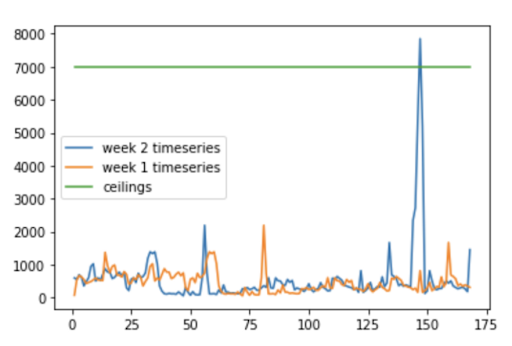Escalating Issues Algorithm
Learn how the escalating issues algorithm works.
Escalating issues currently does not work for merged/unmerged issues, but we're working on fixing this.
By default, archived issues will transition to unresolved when the event count escalates. Sentry defines an issue as Escalating when the number of events is significantly higher than the previous week.
The escalating issues algorithm uses historical data from the previous week to calculate thresholds for the next week on a per-issue basis. If an archived issue exceeds its predetermined threshold, it gets tagged as Escalating, unless it was "Archived Forever". An escalating issue is automatically surfaced in the "Unresolved" and "Escalating" tabs.
If the issue is over 7 days old, the escalating limit is calculated on a daily basis as the max of either a baseline spike limit or a bursty limit:
limitescalating = max(limitspike , limitbursty)
In most cases, the spike limit is applied to issues with a relatively stable event volume, while the bursty limit is applied to issues with regular bursts in volume (such as cron or Airflow jobs and task runners).
The spike limit calculation establishes a baseline for what’s considered a significant increase in volume for an issue. It takes the average hourly volume (weighted by day-of-week) and variance over the previous week to calculate the limit:
limitspike = avgweighted + (min(max((avg + (5 * std))/avg, 5),8) * avg)
Example
The chart above shows the event volumes for an actual Sentry issue that was escalating. The orange line shows the volume from the past week, which is then used to generate the spike threshold for the next week, represented by the green line. The blue line shows the next week’s volume, which crosses the threshold around hour 148 (day 7). At this point, the issue is flagged as escalating.
Some issues, such as cron jobs, purposefully have a high volume of events in a short period of time. If we used the spike limit calculation, it could incorrectly flag these types of issues as escalating. To account for this, the algorithm uses a bursty limit calculation, which is based on the maximum hourly volume and the coefficient of variation (ratio of standard deviation over the average) for the previous week:
limitbursty = maxtimeseries * min(max(2, 5e-0.65cv), 5)
This chart shows an example of a bursty Sentry issue. The spike limit, represented by the orange line, would have incorrectly flagged the issue as escalating. The algorithm accounts for this behavior with the new bursty limit, represented by the green line.
If the issue is less than 7 days old and does not have historical data from the previous week, then the spike limit is calculated by taking the maximum hourly volume and multiplying it by 10:
limitescalating = maxtimeseries * 10
Our documentation is open source and available on GitHub. Your contributions are welcome, whether fixing a typo (drat!) or suggesting an update ("yeah, this would be better").

